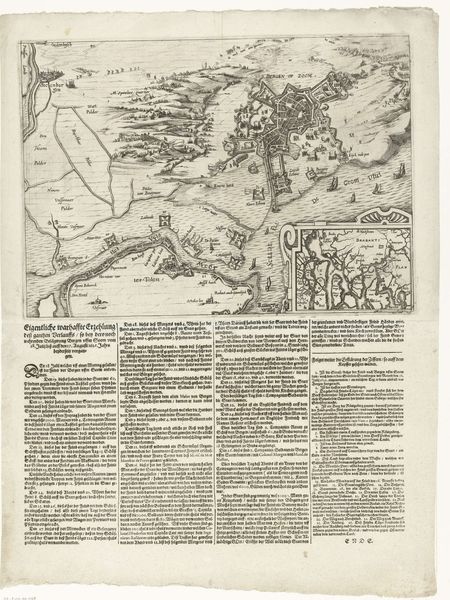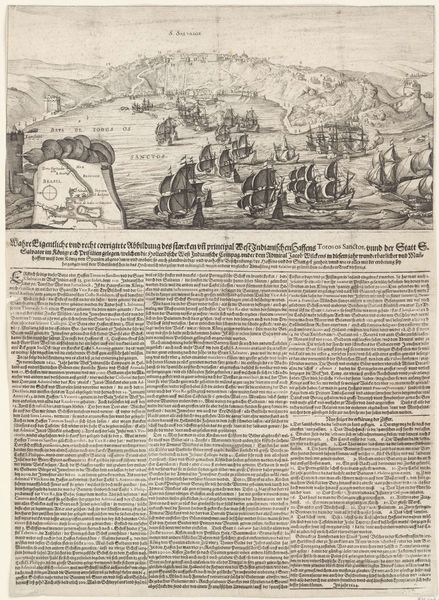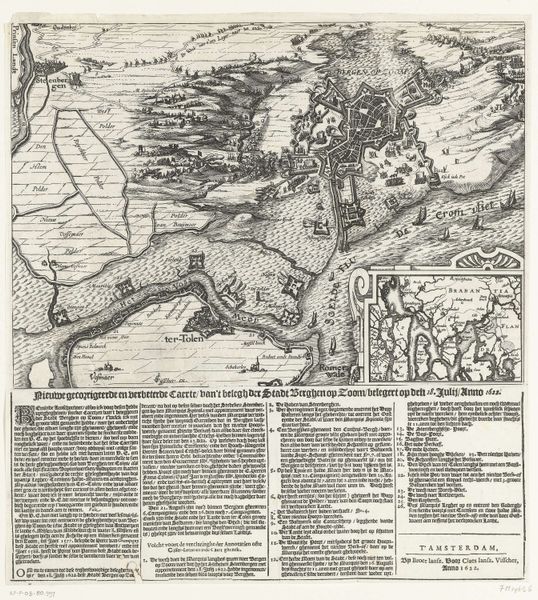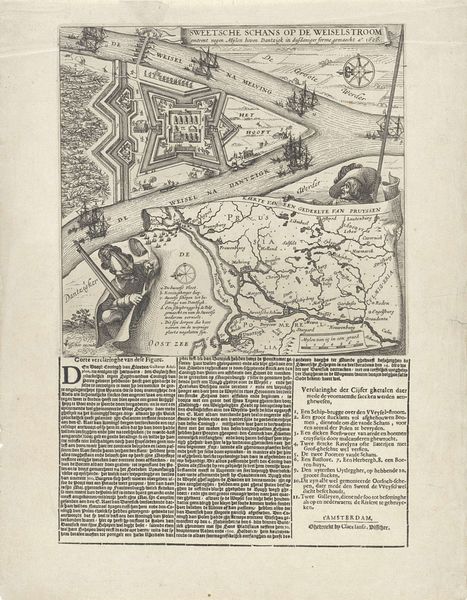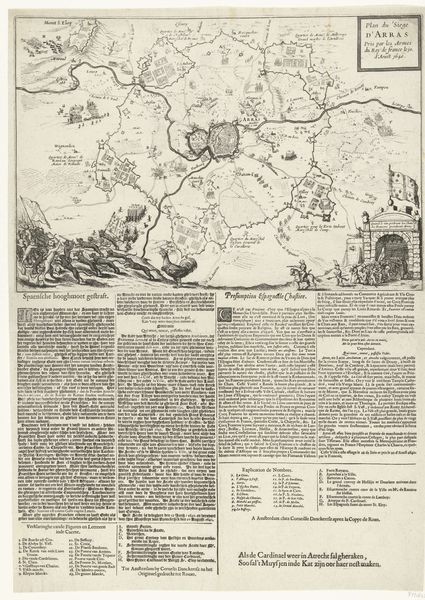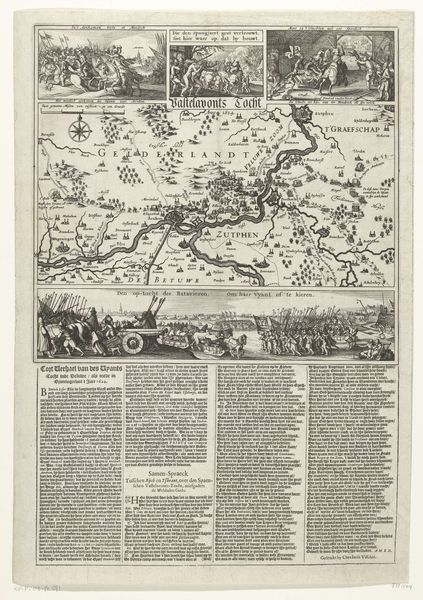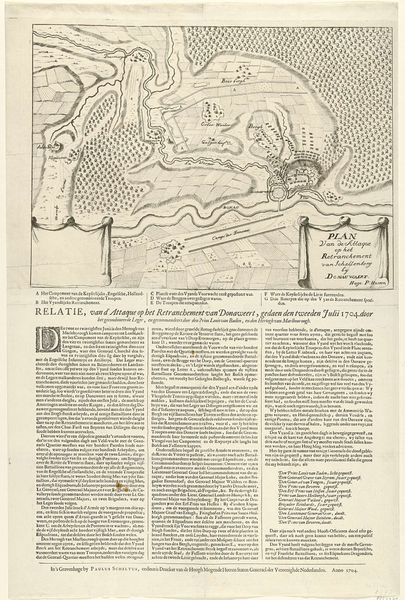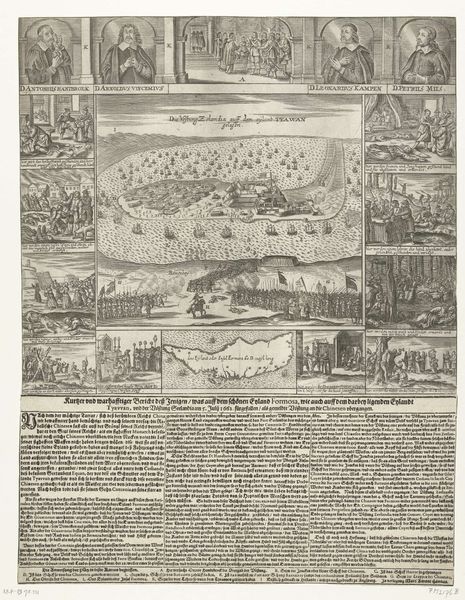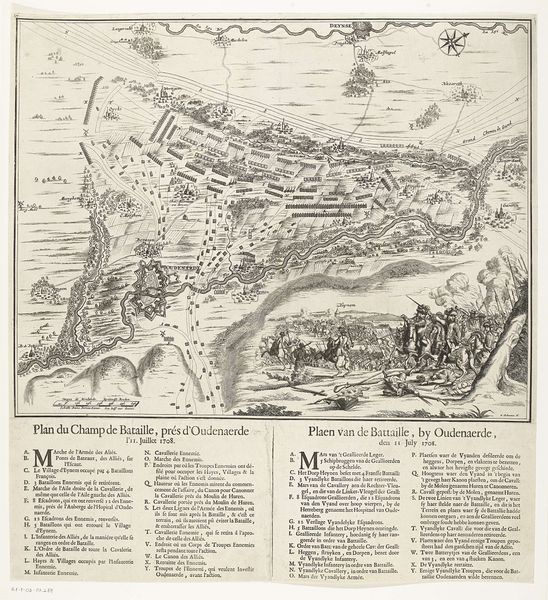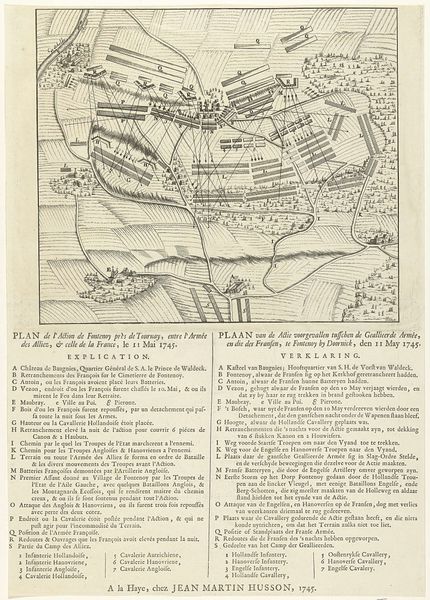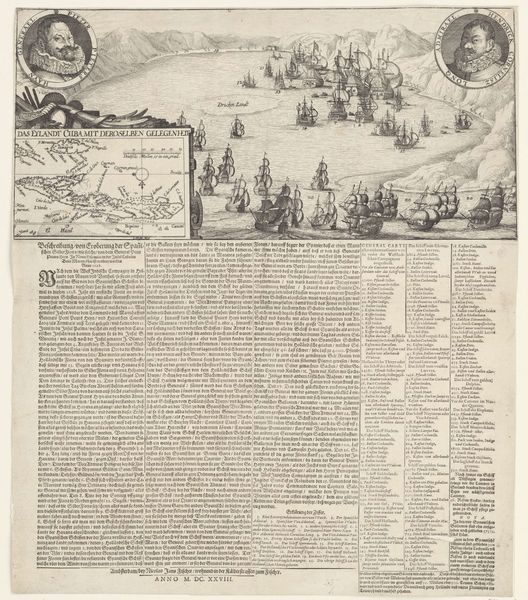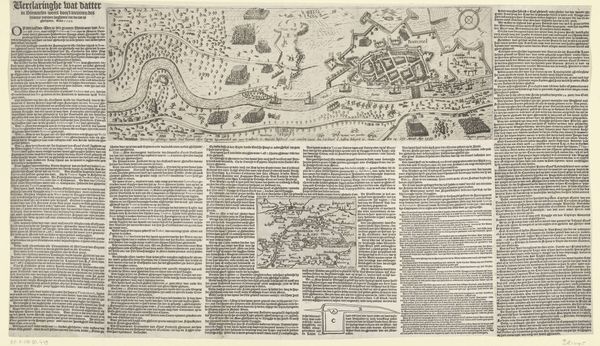
print, engraving
#
baroque
# print
#
old engraving style
#
landscape
#
line
#
cityscape
#
history-painting
#
engraving
Dimensions: height 389 mm, width 302 mm
Copyright: Rijks Museum: Open Domain
Curator: We're looking at a print titled "Beleg van Menen, 1706," or "Siege of Menen, 1706," created anonymously in 1706. It’s an engraving, typical of the Baroque period, depicting a cityscape during wartime. Editor: It strikes me as incredibly detailed, almost overwhelming. There’s so much happening visually – smoke, figures, fortifications – yet it feels quite removed, like a staged performance more than a bloody battle. It even shows a detailed accounting of persons related to the events portrayed. Curator: Exactly! It's important to remember that these prints weren't necessarily meant as objective reportage. This was created to portray a specific narrative. It served to represent, and in doing so, influence public perceptions of events, leaders, and even war itself. Think of it as early political media. The Siege of Menen was an important military moment in the War of the Spanish Succession. Editor: Looking closer, I'm drawn to the group of figures in the lower left. They're observing the siege almost like spectators, yet they carry weapons and appear directly involved. What symbolic weight do they carry, situated like that? Curator: The figures represent a range of stakeholders and their position at this strategic outpost: civic leaders, the military and clergy and their varying responses to military conflict are visible. They underscore that warfare, in this era, extended beyond simple military action; it deeply impacted local governments, international diplomacy, economics, and religious affairs. The artist seems to imply these sieges aren’t won by military might alone. Editor: It really makes you consider the layering of imagery – the visible spectacle of warfare, the social disruption, the personal narratives… It seems all of it is compressed into a single, powerful symbol. What is interesting is the extent that we consider these to be unbiased documentary objects today, as opposed to political cartoons that carried their own symbolic weight. Curator: Precisely. Consider the act of producing such imagery – the resources involved, the distribution networks, the intended audience. These elements underscore how art became intertwined with shaping the geopolitical narrative. Editor: This image speaks to the cultural memory embedded within seemingly objective depictions of history, and the power they carry to inform, or misinform, future generations. It's fascinating.
Comments
No comments
Be the first to comment and join the conversation on the ultimate creative platform.

